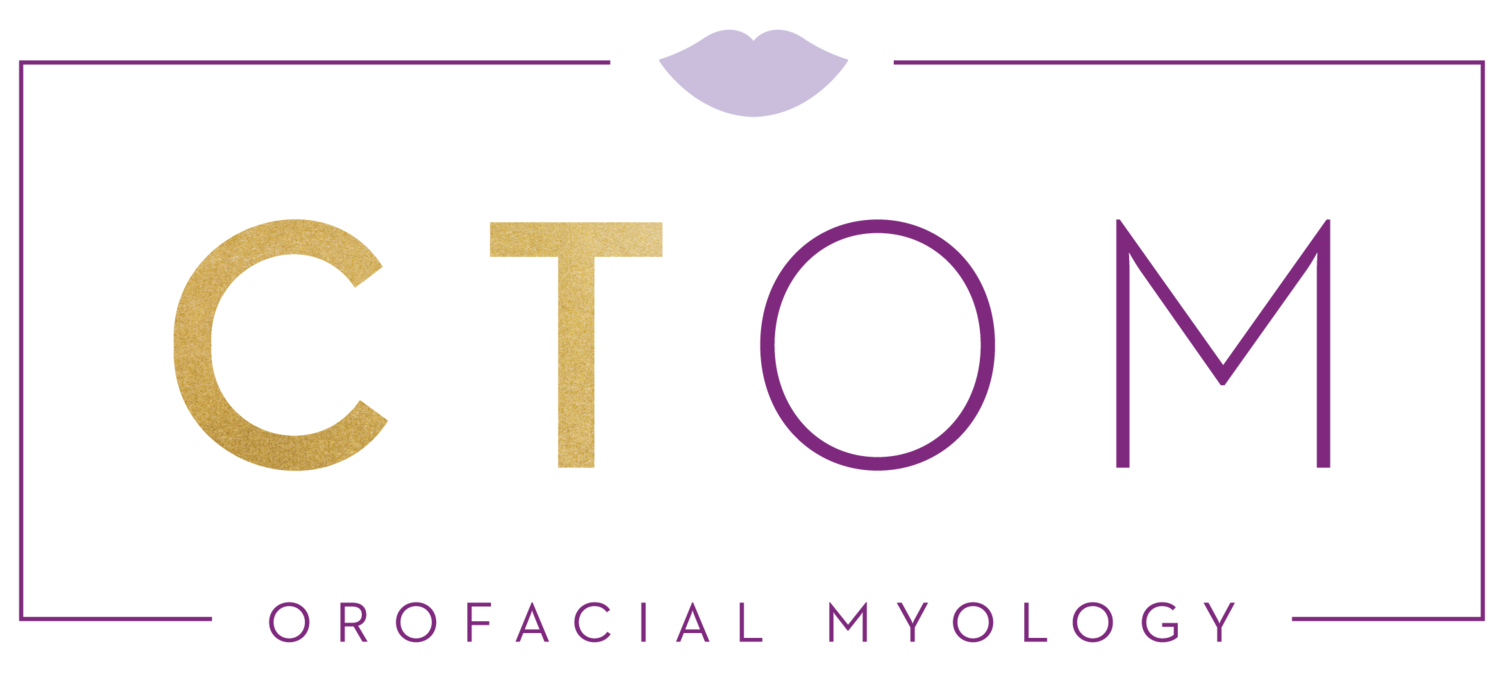What is OMT?
The study and treatment of oral and facial muscles as they relate to speech, dentition, chewing/bolus collection, swallowing, and overall mental and physical health. It is the neuromuscular re-education or repatterning of the oral and facial muscles. Also known as Orofacial Myofunctional Therapy (OMT) or Orofacial Myology
AOMT (Academy of Orofacial Myofunctional Therapy)

The goals of Orofacial Myology Treatment are to:
(Myofunctional Therapy)
establish nasal breathing as primary function
promote a lip seal and normalize freeway space
promote a palatal tongue rest position
promote an optimal swallowing pattern
promote proper chewing and drinking
correct excessive dysfunctional habits

Problems (past or present) that may be associated with Incorrect Oral Muscle Patterns:
Tongue-tie/Lip Tie
Tongue Thrust
Snoring
History of orthodontics
Inability to masticate food properly, open mouth chewing
Speech Problems
Periodontal Disease
Forward Head and Neck Posture
High Narrow Palate
Grinding and Clenching, Temporal Mandibular Disorders (jaw pain)
ADHD
Frequent congestion
Asthma
Anxiety
Incorrect swallowing may be linked to GERD
Oral tissue irritation
Lack of Lip seal (mouth breathing) may lead to occlusal dysfunction
Obstructive Sleep Apnea (OSA)
Low, forward tongue rest may be linked to orthodontic relapse, psychological, cosmetic, and structural issues
Noxious Oral Habits (thumb/finger sucking, nail biting, prolonged pacifier)
DID YOU KNOW…
Myofunctional therapy has been in the literature for over 100 years❗️
This article dates back to 1918, published by Dr. Alfred Rogers— also known as the Father of Myofunctional therapy orthodontics.
Dr. Alfred Rogers developed a series of exercises for each facial muscle and stated that he shared the “belief that the culture of the muscles of mastication and the so-called muscles of expression is of paramount importance when considered in relation to their influence upon the developing bony structure beneath them. The successful treatment of many cases of malocclusion is dependent upon an understanding of the muscular tissues of the face and the development of their functional activity...Muscle training is the best and most rationale means for overcoming various facial muscular habits, such, for instance, as that of mouth-breathing.” ⠀
Rogers, A.P. (1918). Exercises for the development of the muscles in the face, with a view to increasing their functional activity. Dental Cosmos. 60, 857-876




